5 Potential Screen Printing Problems &; Comment les résoudre
Introduction:
Dans cet article, nous explorerons cinq problèmes courants de sérigraphie rencontrés par les sérigraphes et fournirons des solutions détaillées pour les surmonter.. En comprenant ces problèmes et en mettant en œuvre les remèdes suggérés, vous pouvez améliorer la qualité de votre écran de sérigraphie et obtenir des résultats de peinture par sérigraphie plus cohérents et professionnels.
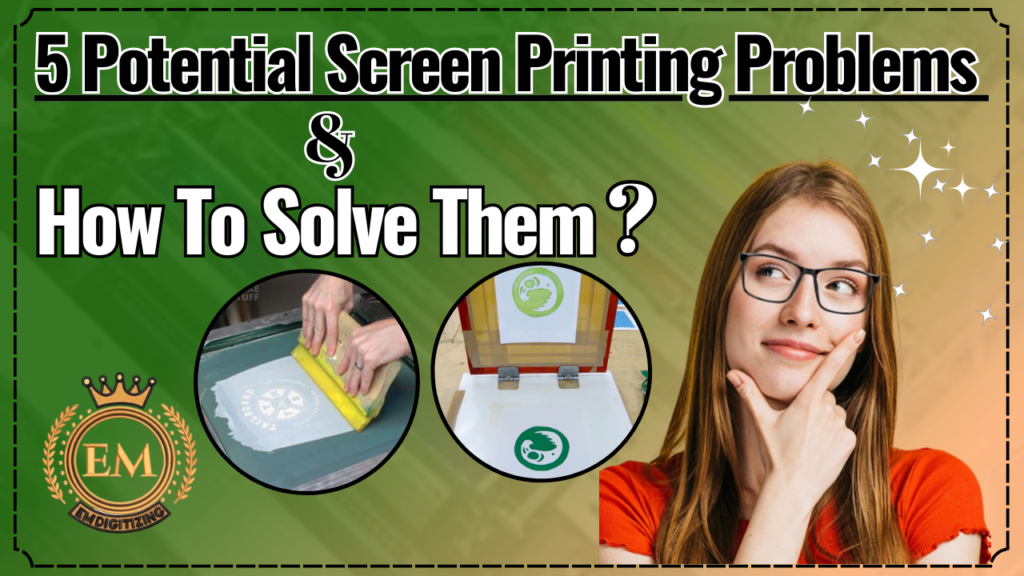
5 Potential Screen Printing Problems &; Comment les résoudre
Qu'est-ce qu'uneprint Screen?
Voyons comment fonctionne la sublimation et comment éviter les erreurs de sublimation sur les couleurs sombres.
La sérigraphie sur tissu est une méthode polyvalente et populaire pour créer des impressions de haute qualité sur diverses surfaces.. Cependant, comme toute technique d'impression, le processus de sérigraphie n’est pas sans défis.
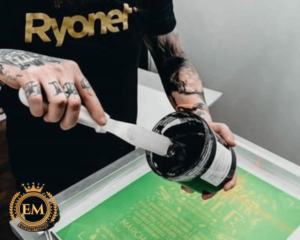
5 Potential Screen Printing Problems &; Comment les résoudre
Discutons 5 problèmes potentiels de sérigraphie et voir comment les résoudre:
Problème 1: Saignement d'encre
Le saignement d’encre fait référence à la propagation indésirable de l’encre, provoquant des impressions floues ou floues en dépassant les limites prévues. Cela peut être dû à des facteurs tels qu'une application excessive d'encre., écran inapproprié tension du fil, ou pression de raclette inadéquate.
Pour éviter les saignements d'encre, assurez-vous que la tension de la peinture de l'écran est appropriée et utilisez le nombre de mailles approprié pour la conception. Appliquez la bonne quantité de pression pendant l’impression, et envisagez d'utiliser une encre à faible saignement ou d'ajouter un agent bloquant le saignement au mélange d'encre.. Testez les impressions et ajustez les variables si nécessaire.
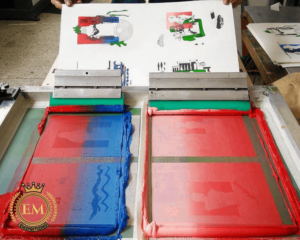
Problème 2: Fautes d'impression et erreurs
Les erreurs de sérigraphie peuvent être frustrantes, mais ils peuvent être corrigés avec les bonnes techniques. Quand des erreurs surviennent, agir rapidement. Pour les fautes d'impression, retirer le vêtement de la presse et le remplacer par un neuf. Si l'erreur est sur l'écran, nettoyez-le soigneusement avant de continuer. Prendre des mesures pour améliorer l’enregistrement, comme utiliser des guides d'enregistrement ou assurer un alignement précis du pochoir.
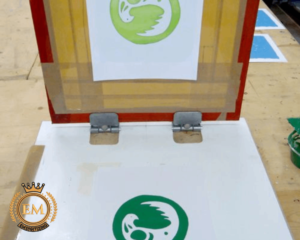
Problème 3: Mauvaise adhérence de l'encre
Il est essentiel que l'encre adhère correctement au substrat pour des impressions durables.. Facteurs tels qu'une mauvaise préparation de l'écran, durcissement insuffisant de l'encre, ou un choix de substrat inapproprié peut entraîner des problèmes d’adhérence.
Pour résoudre ce problème, assurez-vous de dégraisser et de bien enduire la sérigraphie avec une émulsion. Vérifiez que l'encre est adaptée au tissu ou au support choisi. Expérimentez avec différents additifs d’encre ou promoteurs d’adhérence pour améliorer l’adhérence de l’encre.
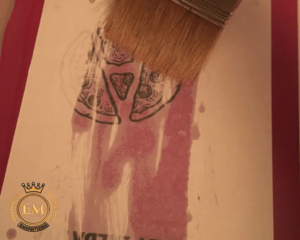
Problème 4: Trous d'épingle
Les trous d'épingle sont de minuscules vides dans l'image imprimée qui peuvent avoir un impact négatif sur la qualité globale de l'impression.. Ils sont souvent causés par des contaminants sur l'écran ou par un revêtement d'émulsion inapproprié.. Pour résoudre ce problème, nettoyer soigneusement l'écran avant chaque tirage, s'assurer qu'aucun contaminant n'est présent. Si les trous d'épingle persistent, envisager d'augmenter le temps d'exposition pendant l'exposition du pochoir pour garantir un durcissement correct.
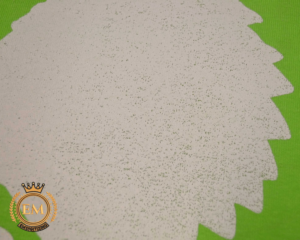
Problème 5: Défis d'inscription
Les problèmes d'enregistrement dans la peinture pour sérigraphie font référence aux difficultés d'alignement précis de plusieurs couleurs ou couches pendant le processus. impression d'écran processus. Pour relever ces défis, assurer la stabilité des écrans en maintenant une tension appropriée. Utilisez des marques d'enregistrement ou des modèles comme guides pour l'alignement. Investissez dans des équipements de qualité dotés de capacités de micro-enregistrement. Pratiquez une configuration et une préparation appropriées pour améliorer la précision de l'enregistrement.
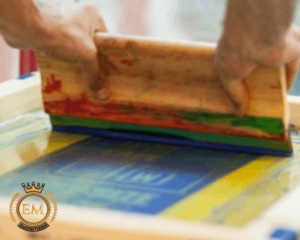
Conseils pour vous aider avec la sérigraphie:
Voici quelques conseils pour vous aider avec la sérigraphie:
- Assurez-vous que votre sérigraphie est propre et exempte de tout résidu ou débris avant d'appliquer l'émulsion.. Cela aidera à éviter des problèmes tels que des trous d'épingle et un revêtement inégal..
- Investissez dans des écrans de qualité, encres, et émulsions. L'utilisation de produits fiables et réputés peut améliorer considérablement l'expérience globale de conception pour la sérigraphie et la qualité de vos impressions..
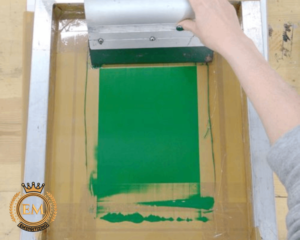
- Avant de démarrer une production complète, effectuez toujours des tests d'impression pour vérifier tout problème potentiel ou tout ajustement nécessaire. Cela vous permettra d'apporter les modifications nécessaires avant de vous engager sur des quantités plus importantes..
- Appliquez une pression constante et uniforme lorsque vous tirez la raclette sur l'écran.. Une pression incohérente peut entraîner des dépôts d'encre inégaux et affecter la qualité d'impression globale..
- Un espace de travail propre et organisé est essentiel pour une impression efficace et précise. Nettoyez régulièrement votre matériel, écrans, et surface de travail pour empêcher la contamination ou l'encre parasite d'affecter vos impressions.
- Follow the manufacturer’;s recommandations pour sécher ou durcir vos impressions. Un séchage ou un durcissement incorrect peut entraîner des problèmes tels que des bavures ou une mauvaise adhérence de l'encre..
- Don’;t hesitate to reach out to experienced screen printers or join online communities and forums to seek advice and learn from others’; expériences. Le partage de connaissances et d'idées peut grandement améliorer vos compétences en tant que sérigraphe.
- Vérifiez et ajustez régulièrement la tension de vos écrans pour garantir des impressions cohérentes et précises. Des écrans desserrés peuvent entraîner un mauvais enregistrement ou des taches, tandis que des écrans trop serrés peuvent entraîner une panne prématurée de l'écran.
- La sérigraphie peut être un défi, but don’;ne me décourage pas. Continuez à pratiquer, expérimenter, et affiner vos techniques. Avec du temps et de la persévérance, vous deviendrez plus compétent et obtiendrez les résultats souhaités.
- If you’;vous utilisez des encres mélangées sur mesure ou ajustez les couleurs, assurez-vous de bien les mélanger et d'effectuer des tests d'impression pour garantir la couleur et la consistance souhaitées avant de commencer une production complète..
- Investissez dans un tensiomètre d'écran de qualité pour mesurer et ajuster avec précision la tension de vos écrans. Une tension appropriée permet d'obtenir un enregistrement précis et un transfert d'encre cohérent.
- Les fluctuations de température et d'humidité peuvent avoir un impact sur le processus de sérigraphie. Essayez de travailler dans un environnement stable avec des niveaux de température et d'humidité contrôlés pour minimiser les variables qui pourraient affecter le séchage de l'encre., exposition à l'émulsion, et la qualité d'impression globale.
- Différent motifs de broderie et les substrats peuvent nécessiter différents nombres de mailles. Expérimentez avec différents nombres de mailles pour trouver celui optimal pour votre travail d'impression spécifique. Un nombre de maillages plus élevé est généralement utilisé pour des détails plus fins, tandis que le nombre de mailles inférieur convient aux impressions audacieuses et plus épaisses..
- Assurez-vous que vos pochoirs sont correctement alignés sur les écrans. Investissez dans des guides de repérage ou utilisez des marques d'alignement pour obtenir un placement précis de vos couches de conception et minimiser les problèmes de mauvais repérage..
- Lors de l'impression de plusieurs copies du même motif, maintenir une vitesse d'impression constante tout au long du processus. La constance de la vitesse permet de garantir un dépôt d'encre et une saturation des couleurs uniformes sur toutes les impressions..
- Pour prolonger la durée de vie de vos écrans, nettoyez-les soigneusement juste après chaque session d'impression. Retirez rapidement l'excès d'encre, émulsion, ou tout résidu pour éviter le colmatage ou l'accumulation qui pourrait affecter les impressions futures.
- Expérimentez avec différents angles de raclette, pressions, et des traits pour trouver la combinaison optimale pour vos impressions spécifiques. Faites attention à obtenir un bon fonctionnement, des traits uniformes pour garantir une couverture d'encre constante.
- Établissez un flux de travail systématique pour votre processus de sérigraphie. Cela inclut des étapes telles que la préparation de l'écran, application de pochoir, mélange d'encre, inscription, impression, et nettoyage. Avoir un flux de travail bien défini permet de rationaliser votre processus et de maintenir la cohérence.
- Restez curieux et ouvert à l’apprentissage de nouvelles techniques, explorer différents matériaux, et expérimenter des approches innovantes. Assister à des ateliers, lire des livres, regarder des tutoriels, et engagez-vous avec la communauté de la sérigraphie pour rester au courant des dernières tendances et avancées.
Rappelles toi, maîtriser comment réaliser des sérigraphies, comment fonctionne la sérigraphie, et la sérigraphie elle-même prend du temps et de la pratique. En mettant en œuvre ces conseils et en perfectionnant continuellement vos compétences, you’;vous serez sur la bonne voie pour produire des sérigraphies de haute qualité.
Conclusion:
La sérigraphie dans l'art peut présenter divers défis, mais armé des bonnes connaissances et des bonnes solutions, ces problèmes peuvent être surmontés. En résolvant les problèmes de peinture de tramage tels que les saignements d'encre, fautes d'impression, mauvaise adhérence de l'encre, trous d'épingle, et les difficultés d'enregistrement, vous pouvez améliorer la qualité de vos sérigraphies. La mise en œuvre des techniques recommandées et le souci du détail tout au long du processus d'impression vous aideront à obtenir des résultats cohérents et professionnels.. Avec de la pratique et de l'expérience, vous deviendrez expert en dépannage et en réalisation de sérigraphies exceptionnelles répondant à vos objectifs artistiques ou commerciaux.
Si vous avez besoin d'une numérisation de logo de broderie personnalisée, ne cherchez pas plus loin que NUMÉRISATION EM. Nous sommes spécialisés dans la fourniture de services haut de gamme pour la personnalisation de logos brodés, garantir une qualité exceptionnelle. Profitez de notre offre exclusive d'un 50% réduction sur tous nos services pour les nouveaux clients. Demandez un devis gratuit aujourd'hui, et notre équipe vous aidera rapidement.
Merci d'avoir pris le temps de lire!
Les saignements lors de la sérigraphie peuvent être causés par une application excessive d'encre., mauvaise tension de l'écran, ou pression de raclette inadéquate. L'ajustement de ces facteurs et l'utilisation d'une consistance d'encre appropriée peuvent aider à minimiser les saignements..
Pour corriger les erreurs de sérigraphie, identifier le problème (par exemple., taches, désalignement), laissez l'encre sécher complètement, puis utilisez des techniques appropriées comme le nettoyage des taches, retouches, ou réimpression avec enregistrement minutieux pour corriger les erreurs.
L'encre colle à l'écran lors de la sérigraphie en raison des ouvertures des mailles et de l'action capillaire.. Lorsque l'écran est correctement préparé, recouvert, et séché, l'encre adhère aux zones exposées, résultant en une impression souhaitée.
Les trous d'épingle dans la sérigraphie peuvent être évités en utilisant un écran à plus grand nombre de mailles., assurer une application et un séchage appropriés de l'émulsion, en utilisant une pression de raclette appropriée, et maintenir des écrans propres et exempts de débris.
La sérigraphie peut s'avérer difficile en raison de facteurs tels que l'obtention d'une précision dessins inscription, gestion de la consistance et du séchage de l'encre, résoudre des problèmes tels que des saignements ou des erreurs d'impression, et maîtriser la technique consistant à appliquer une pression uniforme tout en contrôlant des variables telles que la tension du maillage et l'angle de la raclette. Entraine toi, expérience, et l'attention portée aux détails peut aider à surmonter ces difficultés.
